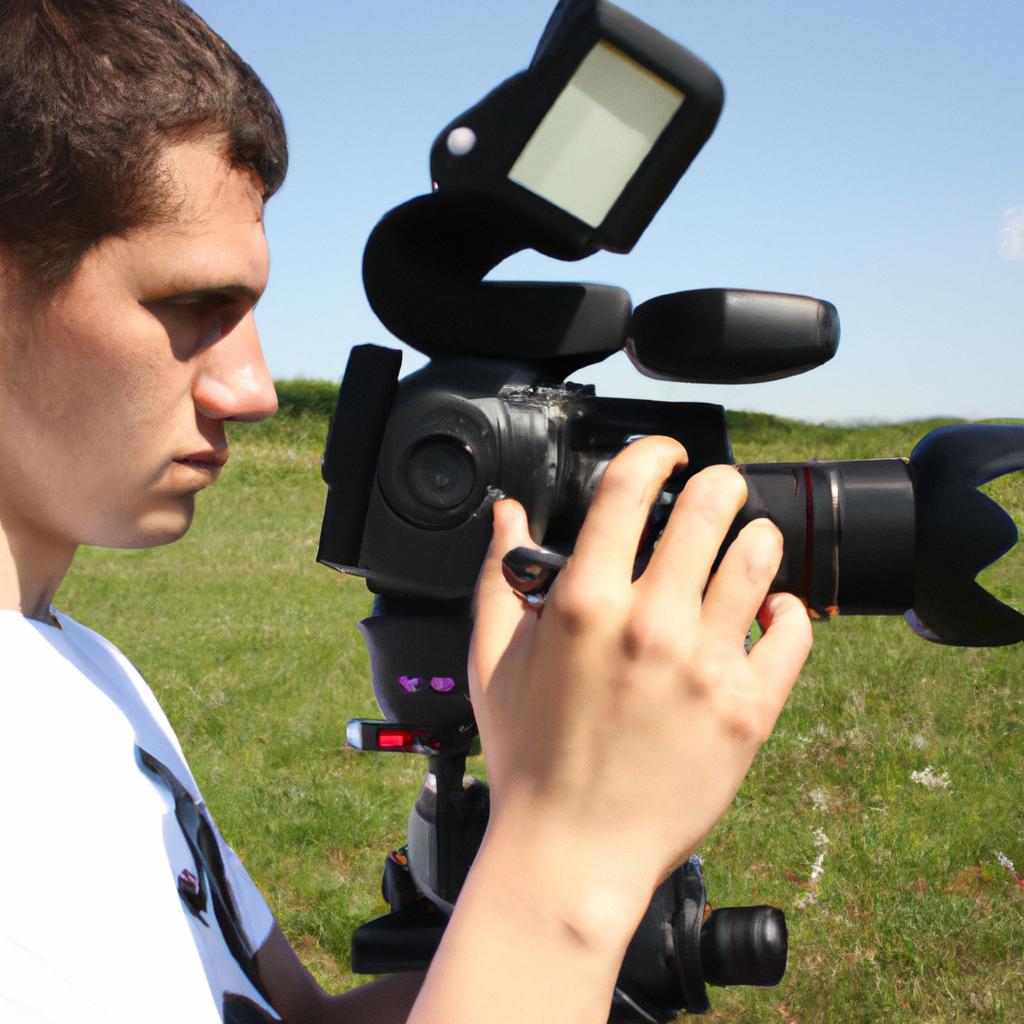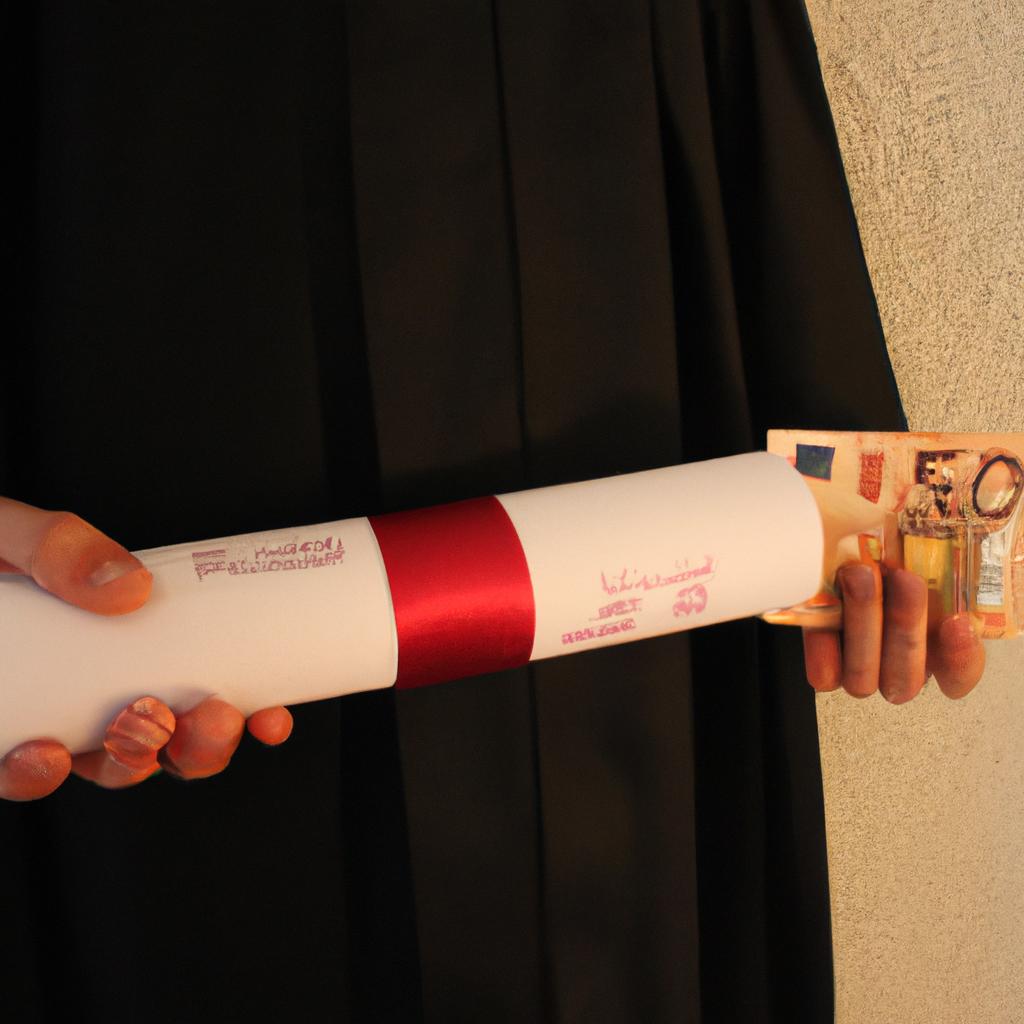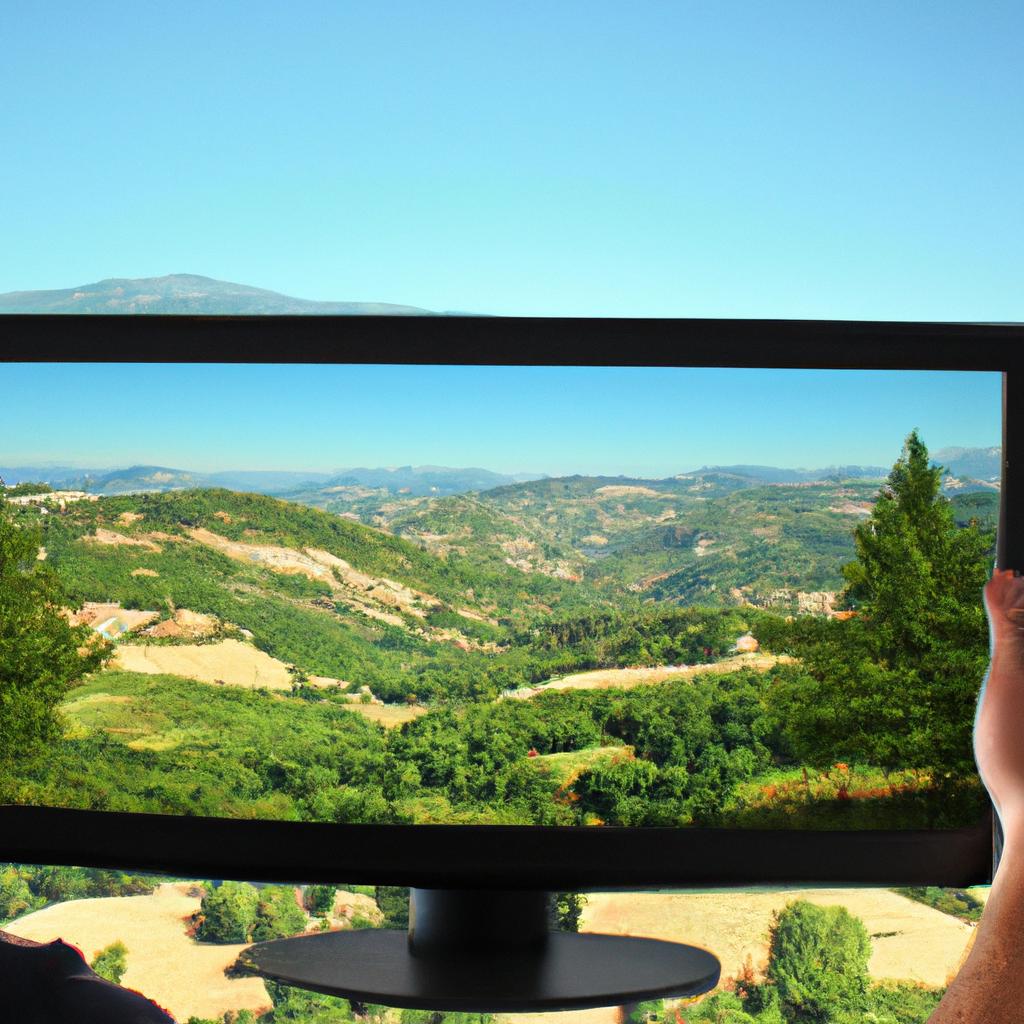The art of documentary filmmaking has evolved significantly over the years, becoming a powerful medium to portray real-life events and stories. Through careful production techniques, filmmakers are able to engage audiences and provide them with a unique perspective on various subjects. One notable example is the critically acclaimed documentary “Planet Earth” produced by the BBC, which captivated viewers worldwide by showcasing stunning visuals and intriguing narratives about our planet’s diverse ecosystems.
In order to create such compelling documentaries, artists and television producers employ specific production techniques that enhance the storytelling process. These techniques encompass various aspects of pre-production, production, and post-production stages, all aimed at effectively conveying information while maintaining authenticity. From extensive research and meticulous planning to innovative camera work and immersive sound design, each step in the documentary process contributes to its final impact on the audience. Understanding these techniques not only sheds light on how documentaries are made but also allows us to appreciate their artistic value as well as their potential for social commentary and awareness.
By exploring different production techniques used in arts and television documentaries, we gain insight into the intricate process behind creating captivating visual narratives. This article delves into key elements such as story development, interviewing strategies, cinematography choices, editing styles, and audio enhancements that contribute to producing impactful documentaries.
Pre-production planning
Pre-production planning plays a crucial role in the successful execution of documentary projects. This phase involves careful organization, meticulous research, and strategic decision-making to ensure that all aspects are well-prepared before production begins.
One example that highlights the significance of pre-production planning is the widely acclaimed documentary “Planet Earth.” Before filming even started, the team spent several months researching different locations around the world and developing a comprehensive plan for each episode. By conducting thorough investigations into various ecosystems and wildlife habits, they were able to capture breathtaking footage rarely seen by audiences. This case study demonstrates how effective pre-production planning can result in an awe-inspiring final product.
To evoke an emotional response from viewers during this stage, it is essential to consider certain factors:
- Engaging narratives: Crafting compelling stories that resonate with the audience helps create an emotional connection. Whether through personal anecdotes or impactful interviews, these narratives offer insight and draw viewers into the documentary’s subject matter.
- Aesthetic visuals: Utilizing visually striking shots enhances engagement and captivates viewers’ attention. Employing techniques such as time-lapse sequences or aerial cinematography can transport audiences into different environments, invoking feelings of wonderment and curiosity.
- Authentic sound design: Soundscapes play a vital role in conveying emotions effectively. Carefully selecting appropriate music and utilizing ambient sounds immerse viewers further into the documentary experience, evoking specific moods or atmospheres.
- Ethical considerations: Addressing ethical concerns surrounding sensitive topics ensures responsible storytelling while respecting individuals involved in the project. By highlighting social justice issues or environmental challenges responsibly, documentaries have the potential to provoke empathy within their audience.
In addition to incorporating emotional elements, pre-production planning often requires systematic organization. The following table illustrates some key tasks typically undertaken during this phase:
| Task | Description |
|---|---|
| Research | Conduct extensive background research on the topic |
| Budgeting | Determine financial resources needed for the project |
| Scheduling | Establish a timeline outlining key milestones |
| Crew and equipment coordination | Organize necessary personnel and gear |
Successfully executing these tasks ensures that the production process runs smoothly, allowing filmmakers to focus on capturing their vision effectively. As pre-production planning sets the stage for documentary projects, it lays a solid foundation for subsequent stages like research and story development.
In transitioning towards the next section on “Research and story development,” understanding the subject matter in-depth is imperative. By conducting thorough research, documentarians gain valuable insights into their chosen topic while identifying potential avenues for exploration within their narrative.
Research and story development
Transitioning from the previous section on pre-production planning, it is important to highlight that a key aspect of successful documentary filmmaking lies in thorough research and story development. To illustrate this point, let us consider an example involving a team of filmmakers aiming to create a thought-provoking documentary about climate change.
Research plays a crucial role in shaping the direction and content of any documentary project. In the case of our hypothetical climate change documentary, extensive research would be necessary to gather accurate data, expert opinions, and firsthand accounts from individuals affected by environmental issues. This process may involve consulting scientific journals, interviewing experts in climatology and ecology, analyzing historical trends, as well as conducting field visits to areas impacted by climate change.
Story development is another critical step that follows comprehensive research. It involves transforming raw information into a compelling narrative structure that engages viewers emotionally. By structuring the film around relatable characters or personal stories related to climate change, the filmmakers can effectively convey its impact on human lives. Additionally, incorporating visual elements such as breathtaking landscapes or distressing scenes can further enhance emotional engagement with the audience.
To evoke an emotional response and emphasize the urgency of addressing climate change through their documentary, the filmmakers might include:
- Alarming statistics illustrating rising global temperatures
- Heart-wrenching interviews with families who have lost homes due to natural disasters caused by climate change
- Inspiring success stories of communities actively working towards sustainable solutions
- Disturbing images depicting deforestation and melting ice caps
Furthermore, employing a table format can help present relevant information concisely while evoking emotions in readers:
| Climate Change Impacts | Consequences |
|---|---|
| Rising sea levels | Coastal erosion and displacement of communities |
| Increased frequency of extreme weather events | Loss of life and infrastructure damage |
| Decline in biodiversity | Disruption of ecosystems |
In conclusion, effective research and story development are integral components of the documentary filmmaking process. By conducting thorough research and molding a compelling narrative, filmmakers can effectively engage their audience emotionally. In the subsequent section on scriptwriting, we will delve into how these elements translate into the creation of a powerful script that brings forth the intended message.
[Transition sentence to Scriptwriting section] As the foundation for any successful documentary, meticulous planning in pre-production sets the stage for an engaging script.
Scriptwriting
Research and Story Development
In the previous section, we explored the crucial step of research and story development in the documentary process. Now, let us delve into another vital aspect: scriptwriting. To illustrate this stage, let’s consider a hypothetical case study about a documentary focusing on climate change.
Scriptwriting is an essential phase where filmmakers transform their research findings into a cohesive narrative structure. It involves crafting a compelling storyline that engages viewers from start to finish. In our climate change documentary, the scriptwriter would meticulously develop key themes such as rising global temperatures, melting glaciers, and extreme weather events.
During the scriptwriting process, several elements need careful consideration:
- Structure: The scriptwriter establishes an effective structure for the documentary by determining how different segments will flow together seamlessly. This includes organizing interviews with experts or individuals directly affected by climate change in a logical sequence to create a powerful narrative arc.
- Tone and Style: Choosing the appropriate tone and style sets the mood for the entire documentary. For example, our climate change film might adopt a serious yet hopeful tone to inspire action against environmental degradation.
- Visual Imagery: Scriptwriters must envision captivating visual imagery that complements the spoken content. They may describe breathtaking shots of icebergs calving or devastating footage of natural disasters caused by climate change.
- Narration and Voiceover: When necessary, narration can guide viewers through complex concepts or provide context to enhance understanding. A well-written voiceover ensures clarity without overshadowing visuals or other sound elements.
As shown in Table 1 below, these considerations play a pivotal role in creating an impactful documentary script:
| Considerations | Example (Climate Change Documentary) |
|---|---|
| Structure | Sequence interviews with scientists explaining causes and consequences of global warming before showcasing real-life stories of communities impacted by it |
| Tone and Style | Serious yet hopeful |
| Visual Imagery | Footage of melting ice caps and extreme weather events |
| Narration and Voiceover | Use narration sparingly, focusing on clarity and complementing visuals |
Table 1: Considerations in documentary scriptwriting
In summary, scriptwriting is a crucial stage where filmmakers shape their research into an engaging narrative structure. Through careful consideration of elements such as structure, tone, visual imagery, and narration, they create a compelling storyline that captivates audiences.
With the script finalized, attention turns to cinematography and camera techniques necessary to capture the essence of the story on screen.
Cinematography and camera techniques
From the intricate process of scriptwriting, we now delve into the realm of cinematography and camera techniques. These elements play a crucial role in bringing documentaries to life, capturing moments with precision and finesse. To illustrate the significance of these techniques, let us consider an example where a documentary filmmaker aims to highlight the plight of endangered species in their natural habitats.
In order to effectively convey the urgency and beauty of this subject matter, filmmakers employ various cinematography and camera techniques. Firstly, they utilize wide-angle shots to establish the expansive landscapes that serve as home to these endangered animals. By showcasing vast stretches of untouched wilderness, viewers are immediately immersed in the environment and gain a better understanding of why preservation is essential.
Secondly, close-up shots enable filmmakers to capture intimate details and emotions on both human subjects involved in conservation efforts and the animal protagonists themselves. This technique creates empathy among viewers by allowing them to truly connect with what they see on screen — be it the determination etched on a researcher’s face or the vulnerability displayed by an endangered creature.
Additionally, slow-motion sequences can create a sense of awe and wonderment. When used strategically during pivotal moments such as predatory hunts or breathtaking displays of courtship rituals, slow motion helps emphasize every detail – from muscular movements to minute gestures – making for captivating viewing experiences.
To further illustrate how cinematography and camera techniques contribute to storytelling in documentaries, consider the following emotional bullet points:
- The sweeping aerial shots depicting majestic herds galloping across savannas evoke a sense of grandeur.
- Intimate close-ups showing teardrops rolling down weathered faces ignite feelings of compassion.
- Slow-motion footage capturing delicate interactions between parent and offspring elicits tenderness.
- Wide-angle shots juxtaposing bustling cityscapes against dwindling wildlife habitats provoke concern for our planet’s future.
Furthermore, below is a table highlighting different types of cinematic shots commonly utilized in documentary filmmaking:
| Shot Type | Description |
|---|---|
| Establishing shot | Sets the scene and provides context for subsequent footage. |
| POV | Simulates the perspective of a character or subject |
| Tracking shot | Smooth camera movement, often following subjects in motion |
| Time-lapse | Accelerates time to show changes that occur over long periods |
As we conclude this section on cinematography and camera techniques, it is evident that these elements are instrumental in captivating audiences and effectively conveying the intended message of a documentary. The careful selection of shots, angles, and movements has the power to evoke emotions, immerse viewers in different environments, and amplify the impact of crucial moments.
Looking ahead to our next topic on post-production editing, filmmakers harness their recorded footage to shape narratives that further engage audiences with powerful storytelling techniques.
Post-production editing
Section 3: Sound Design and Audio Techniques
Building upon the visual elements of cinematography, sound design and audio techniques play a crucial role in enhancing the overall impact of a documentary. By skillfully manipulating soundscapes, filmmakers can evoke emotions, create atmosphere, and engage audiences on a deeper level. To illustrate this point, let’s consider an example where a nature documentary aims to convey the tranquility of a serene forest setting. Through careful selection of ambient sounds such as rustling leaves and chirping birds, coupled with subtle background music that complements the visuals, viewers are transported into the immersive experience of being amidst nature.
In order to achieve effective sound design in documentaries, several techniques are employed:
- Ambient Soundscape: Creating an authentic auditory environment by capturing natural sounds from the location or utilizing high-quality recordings.
- Voiceover Narration: Balancing narration with other audio elements to ensure clarity and seamless integration within the overall soundtrack.
- Foley Effects: Adding realistic sounds during post-production to enhance actions or movements captured on screen.
- Music Selection: Choosing appropriate musical compositions that complement the tone and mood of each scene.
To further emphasize the importance of sound design in documentaries, here is an emotional bullet-point list:
- Engaging audiences through captivating soundscapes
- Enhancing storytelling by evoking specific emotions through carefully crafted audio cues
- Establishing a sense of time and place through accurate representation of real-world sounds
- Fostering connection between viewers and subjects through empathetic use of audio elements
Moreover, incorporating data into tables helps exemplify key concepts visually. Consider this table showcasing various aspects related to sound design in documentaries:
| Aspects | Description | Importance |
|---|---|---|
| Natural Sounds | Capturing authentic environmental audio | Creates immersion |
| Dialogue Clarity | Ensuring clear voiceover narration | Facilitates understanding |
| Sound Effects | Adding realistic and impactful audio enhancements | Enhances visual storytelling |
| Music Selection | Choosing compositions that complement the visuals | Sets mood and evokes emotions |
Transitioning seamlessly into the next section on “Distribution and Promotion,” it is important to consider how sound design influences the overall success of a documentary. By creating an immersive auditory experience, filmmakers can effectively engage audiences and leave a lasting impression.
Distribution and promotion
Building on the comprehensive editing process, distribution and promotion play a crucial role in ensuring that documentaries reach their intended audiences. By effectively disseminating these productions through various channels, documentary filmmakers can maximize viewership and impact. This section explores the key aspects of distributing and promoting documentaries, highlighting strategies for reaching wider audiences.
Distribution Process:
To illustrate the distribution process, let us consider a hypothetical case study focused on an environmental documentary about deforestation in the Amazon rainforest. The film highlights the devastating effects of unsustainable logging practices and aims to raise awareness among global audiences. Once post-production is complete, one of the first steps in distribution involves securing screening opportunities at film festivals, where industry professionals and potential buyers are present. In this case, submitting the documentary to renowned international film festivals such as Sundance or Cannes would provide exposure to influential figures within the industry.
Promotion Strategies:
Effectively promoting a documentary requires careful planning and implementation of targeted marketing strategies. Here are some key approaches that can be employed:
-
Engaging Social Media Campaigns: Leveraging popular social media platforms allows filmmakers to engage directly with their audience while creating buzz around their documentary. By posting engaging content like behind-the-scenes footage, interviews with experts or impacted communities, or thought-provoking snippets from the film itself, creators can generate anticipation and curiosity among viewers.
-
Collaborating with Influencers: Partnering with influencers who align with the thematic focus of your documentary can significantly expand its reach beyond traditional promotional avenues. Identifying individuals or organizations that have a significant following related to environmental conservation could help amplify visibility through shared posts or endorsements.
-
Organizing Community Screenings: Hosting screenings in local communities provides an opportunity for engagement on a more personal level. These events offer space for discussions surrounding pressing issues addressed in the documentary and encourage grassroots activism by empowering community members to take action.
-
Securing Broadcast Deals: Negotiating broadcast agreements with television networks or streaming platforms ensures wider distribution and accessibility for viewers. By aligning the documentary with broadcasters who share a similar target audience, filmmakers can increase the likelihood of their work reaching a large number of people.
Table: Documentaries that have utilized effective promotion strategies
| Documentary Title | Promotion Strategy Used | Result |
|---|---|---|
| “An Inconvenient Truth” | Engaging social media campaigns | Went viral on various platforms |
| “Blackfish” | Collaborating with influencers | Garnered significant attention through partnerships |
| “The Cove” | Organizing community screenings | Activated local communities and sparked discourse |
| “Making a Murderer” | Securing broadcast deals | Reached millions through Netflix |
In summary, successful distribution and promotion are vital components in sharing documentaries with broader audiences. By strategically utilizing film festivals, engaging social media campaigns, collaborating with influencers, organizing community screenings, and securing broadcast deals, filmmakers can maximize the impact of their productions. These efforts not only raise awareness but also facilitate meaningful conversations surrounding important societal issues. Through dedicated distribution and compelling promotional strategies, documentaries have the potential to drive change by inspiring action among viewers worldwide.











